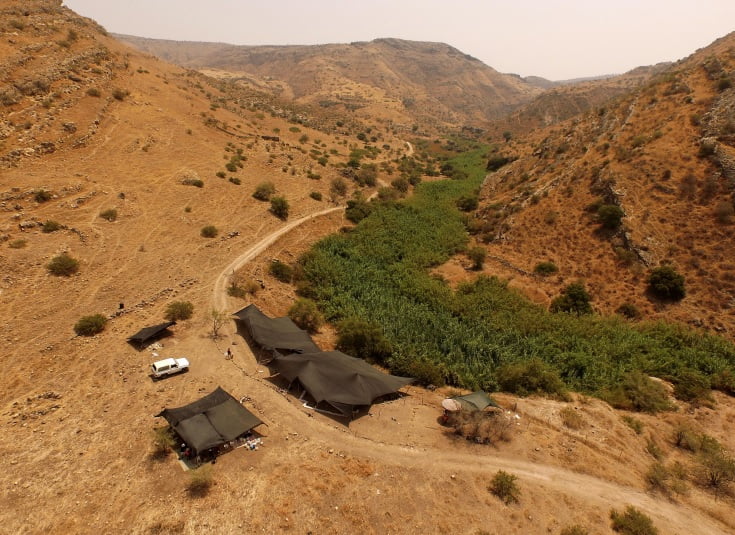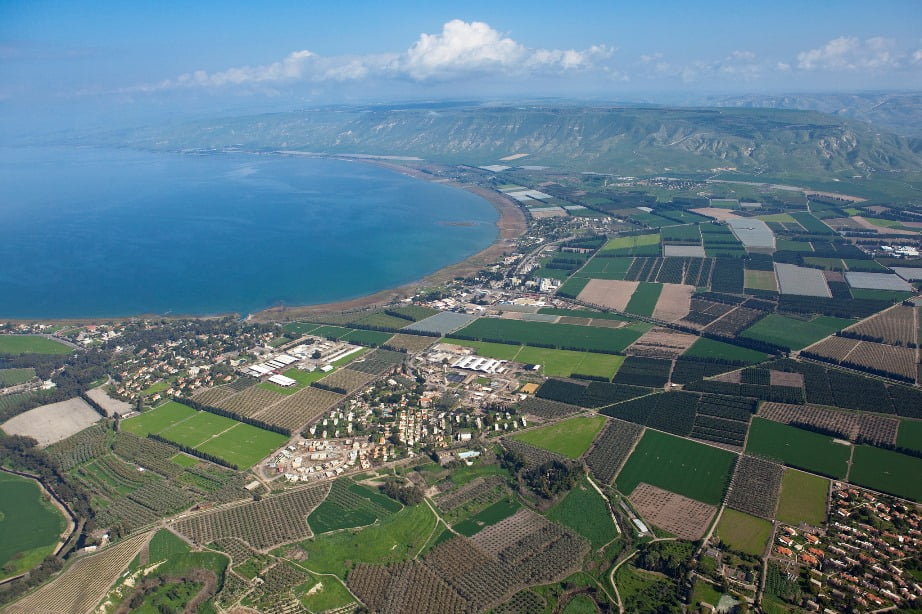Israeli archaeologists have discovered a prehistoric village in the Jordan Valley that sheds light on the historical shift from foraging to agriculture some 12,000 years ago.
Excavated by a group of archaeologists led by Dr. Leore Grosman of the Hebrew University, the site is located near the Ein Gev Stream, not far from the Sea of Galilee.
SEE ALSO: 5,000-Year-Old Egyptian Beer Mugs Discovered In Israel

The site of the excavations near the Sea of Galilee. Photo by Leore Grosman of the Hebrew University
A series of excavations on site revealed an abundance of findings, including human burial remains, flint tools, art manifestations, faunal assemblage (a group of associated animal fossils found together in a given stratum), and tools.
The 1,200-square-foot excavated area revealed an extensive habitation; surprisingly, the village differs markedly from others of its period in Israel. The Ein Gev findings encapsulate cultural characteristics typical of both the Old Stone Age, known as the Paleolithic period, and the New Stone Age, known as the Neolithic period.
SEE ALSO: Researchers Reveal Why Thriving Civilizations Perished 3,200 Years Ago In The Levant
In a study recently published in the scientific journal PLOS ONE, the archaeologists claim that the findings reveal the cultural transition from smaller, mobile tribes to larger, sedentary communities.
Sign up for our free weekly newsletter
SubscribeThe findings are “crucial for the understanding of the socioeconomic processes that marked the shift from Paleolithic mobile societies of hunter-gatherers to Neolithic agricultural communities,” Grosman said in a statement.
The earliest and the longest period in the history of mankind
The Paleolithic period is the earliest and the longest period in the history of mankind. The end of this period is marked by the transition to settled villages and domestication of plants and animals.
According to Grosman, the buildings found at the site “represent at least four occupational stages,” and “the various aspects of the faunal assemblage provide good indications for site permanence.” In addition, “the uniformity of the tool types and the flint knapping technology indicate intensive occupation of the site by the same cultural entity.”
Photos: Austin (Chad) Hill, Leore Grosman, Юкатан
Related posts

Resilient And Nutritious New Plant-Based Milk Aims To Make A Splash

Chocolate From Cultivated Cocoa Comes Without Environmental Toll

Plastic Fantastic: Startup Takes PVC Back To Its Crude Oil Roots





Facebook comments